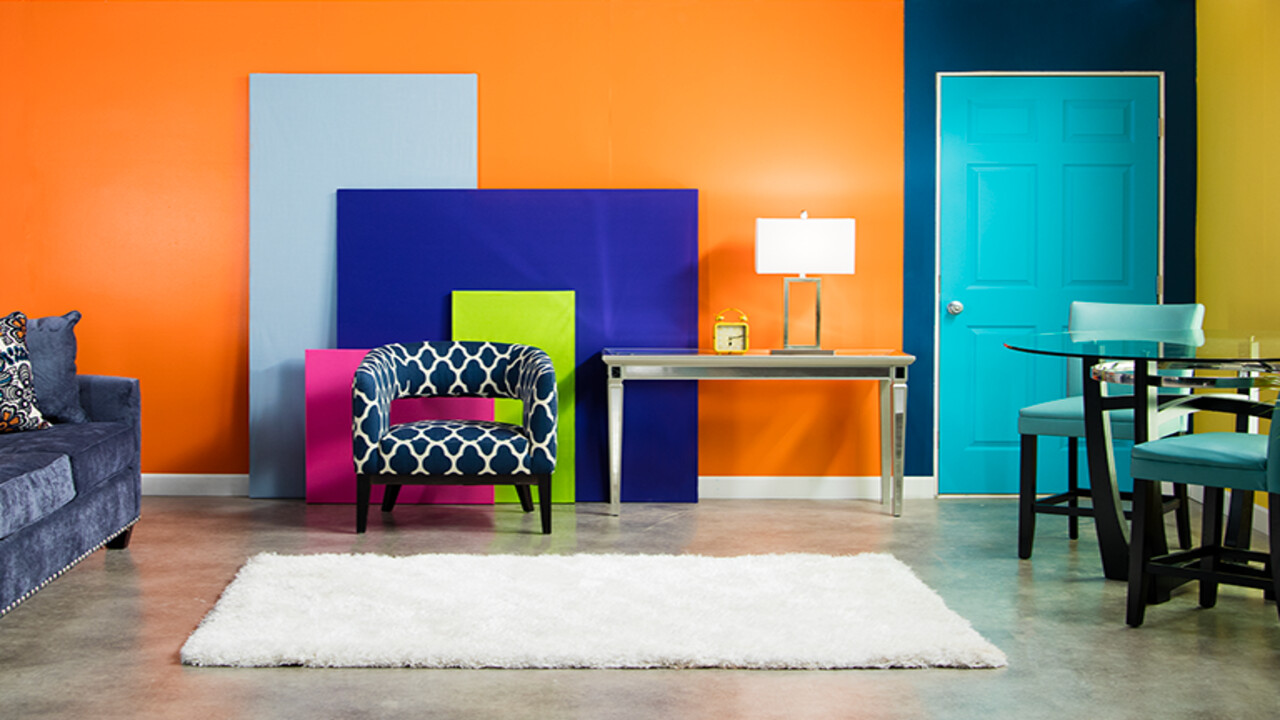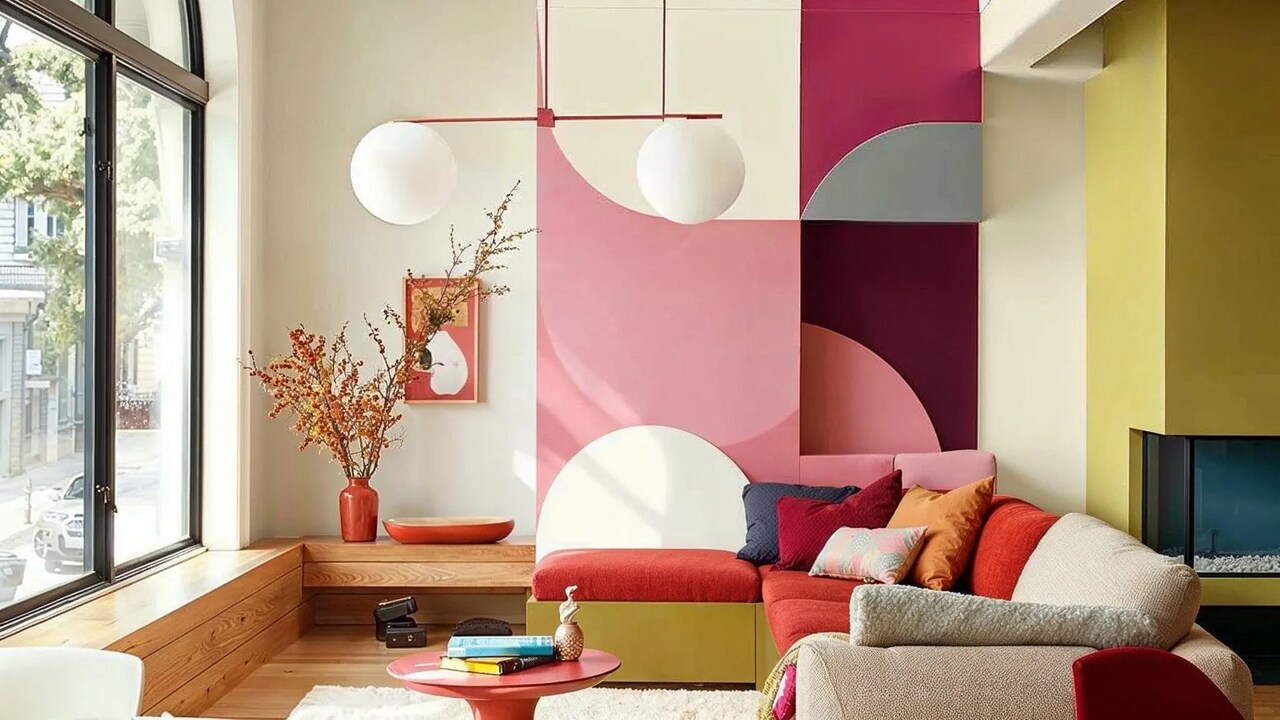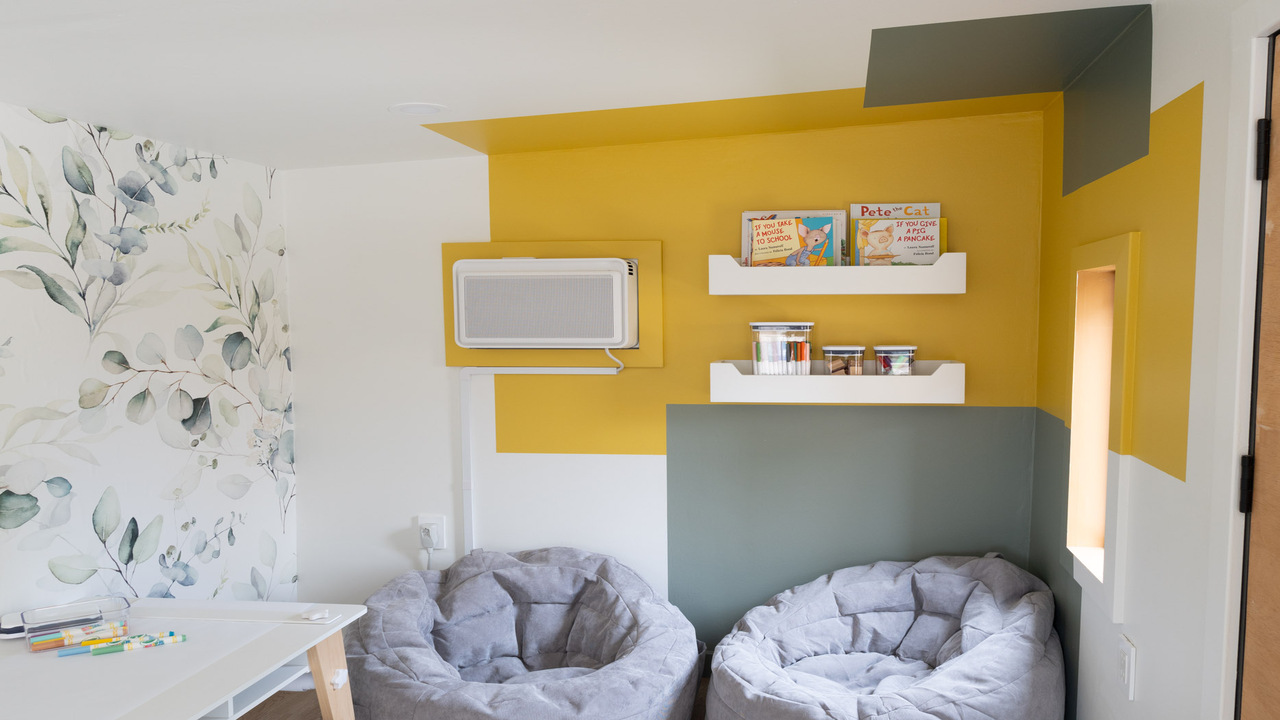Welcome to the colorful world of interior design! Today, we’re diving headfirst into one of the hottest trends: color blocking in the living room.
Whether you’re a design enthusiast or just looking to breathe new life into your space, color blocking offers a bold and dynamic way to transform your living room into a stylish sanctuary.
In this article, we’ll explore tips and tricks for mastering the art of color blocking, from selecting the perfect palette to arranging furniture for maximum impact.
So, if you’re ready to unleash your inner artist and create a living room that’s as vibrant as it is inviting, let’s get started!
Choosing Your Color Palette
When it comes to color blocking in the living room, your choice of color palette sets the stage for the entire design. You can opt for bold contrasts that make a statement or opt for a more subtle approach with harmonious blends.
Bold contrasts involve selecting colors that are opposite each other on the color wheel, such as pairing vibrant reds with cool blues or striking yellows with deep purples. This creates a dynamic and energetic atmosphere in the living room, perfect for those who love a pop of color.
On the other hand, harmonious blends involve selecting colors that are adjacent to each other on the color wheel, such as combining different shades of blue or green. This creates a more calming and cohesive look, ideal for those who prefer a more subdued color palette.
Defining Spaces
Color blocking isn’t just about adding color to your living room; it’s also a powerful tool for defining and dividing spaces within the room. By strategically using color blocks, you can create distinct zones for different activities or functions.

For example, you can use a bold accent wall to define the seating area in your living room, while a different color block can delineate the dining area or a cozy reading nook. This helps to create a sense of flow and organization in the space, making it feel more cohesive and purposeful.
Furniture and Accessories
Once you’ve chosen your color palette and defined your spaces, it’s time to curate furniture and accessories that complement your color-blocking scheme. Look for pieces that either match or contrast with the colors you’ve chosen, depending on the vibe you want to create.

For example, if you’ve opted for a bold and vibrant color palette, consider choosing furniture in neutral tones to balance out the look. Alternatively, if you’ve gone for a more subdued color palette, you can add pops of color through pillows, rugs, and artwork to liven up the space.
Accent Walls and Beyond
While accent walls are a popular way to incorporate color blocking, there are plenty of other creative ways to add color to your living room. Consider painting the ceiling a different color to create visual interest or using color blocking on furniture or architectural features like built-in shelves or alcoves.
You can also experiment with temporary methods of color blocking, such as removable wallpaper or decals, to change up the look of your living room without a long-term commitment.
Lighting Matter
Proper lighting is essential for showcasing your color-blocking efforts in the living room. Natural light can enhance the vibrancy of your chosen colors, so maximize it by keeping windows unobstructed and using sheer curtains or blinds.
Additionally, consider incorporating a variety of lighting sources, such as overhead fixtures, floor lamps, and table lamps, to create layers of light and add depth to your design. Dimmer switches can also be useful for adjusting the mood and ambiance of the room depending on the time of day or occasion.
Mixing Patterns and Textures
Finally, don’t forget about the importance of mixing patterns and textures to add depth and visual interest to your color-blocked living room. Incorporate a variety of fabrics, such as velvet, linen, and leather, in different colors and patterns to create a multi-dimensional look.
You can also experiment with mixing geometric shapes and abstract patterns to complement your color blocking scheme. Just be sure to balance bold patterns with more understated ones to prevent the room from feeling overwhelming.

Color Maintenance Tips
Here’s a detailed table outlining maintenance and longevity considerations for color blocking in the living room:
| Maintenance and Longevity Considerations | Description | Tips |
|---|---|---|
| Quality Paint and Finishes | Start with high-quality paint and finishes that are durable and easy to clean. | Regular cleaning is essential for preserving the vibrancy of your color-blocking scheme. |
| Regular Cleaning | Regular cleaning is essential for preserving the vibrancy of your color blocking scheme. | – Dust and wipe down surfaces regularly to remove dirt and dust. – Use mild cleaners and non-abrasive cloths to avoid damaging painted surfaces. – Pay special attention to high-traffic areas and frequently touched surfaces. |
| Touch-Ups | Keep a small supply of touch-up paint on hand to address minor imperfections. | – Store extra paint in a cool, dry place to prevent deterioration. – Use a small brush or sponge applicator for precise touch-ups. – Blend touch-up paint seamlessly with existing colors for a cohesive look. |
| Protective Measures | Implement protective measures to prevent damage to painted surfaces. | – Use coasters, placemats, and furniture pads to protect surfaces from scratches and water damage. – Consider adding clear protective coatings to high-traffic areas for added durability. – Be mindful of sharp objects or heavy items that could cause damage. |
| UV Protection | Protect against sun damage to prevent color fading. | – Use window treatments with UV protection to block harmful rays. – Rotate furniture and accessories to ensure even exposure to sunlight. – Consider applying UV-resistant clear coats to painted surfaces for added protection. |
| Seasonal Maintenance | Address seasonal factors that could impact painted surfaces. | – Inspect painted surfaces regularly for signs of damage or wear. – Address any cracks, peeling paint, or moisture damage promptly. – Adjust humidity levels as needed to prevent warping or cracking. |
| Professional Maintenance | Seek professional assistance for more extensive maintenance tasks. | – Hire professionals for repainting, refinishing, or repairs. – Consult with experts for advice on color selection and application techniques. – Consider scheduling regular maintenance checks to address any issues proactively. |
By following these maintenance tips and incorporating them into your routine, you can ensure that your color-blocked living room remains vibrant and stylish for years to come.
Conclusion
- Color blocking offers a dynamic way to express your personal style and infuse your living space with vibrancy and energy.
- Strategically using color blocks helps to define and organize different areas within the living room, enhancing functionality and visual appeal.
- Curating furniture and accessories that complement your color-blocking scheme creates a cohesive and visually stunning look.
- Beyond accent walls, there are numerous creative ways to implement color blocking, from furniture to architectural features.
- Proper lighting and the incorporation of textures add depth and dimension to your color-blocked design.
- Regular maintenance, including cleaning, touch-ups, and protective measures, ensures the longevity and vibrancy of your color-blocking scheme.